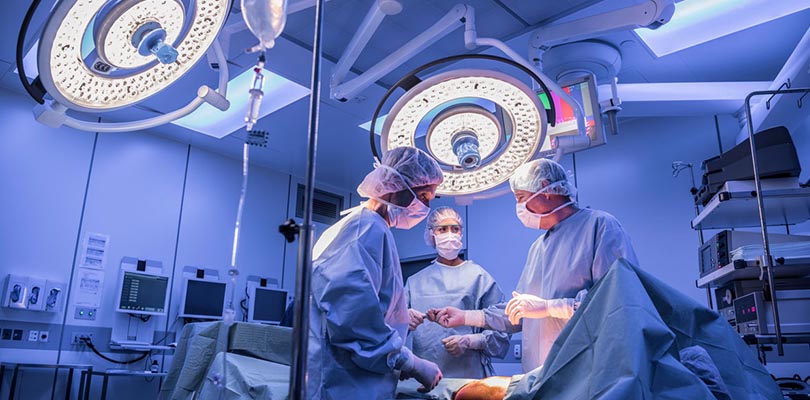What to Know About Bladder Augmentation Surgery
An overactive bladder (OAB) causes dramatic symptoms that are uncomfortable – it is labeled “overactive” for a reason. OAB is a collection of symptoms that cause unpredictable urges to urinate, as well as involuntary losses of urine. In total, OAB is thought to affect approximately 33 million Americans; though it affects more women, and it can also affect men. Bladder augmentation surgery is an option to treat OAB, but is it right for you?
Overactive Bladder Symptoms
OAB is characterized by the presence of certain symptoms:
- An urgent, uncontrollable need to urinate
- Frequent urination – more than eight times in a 24-hour period
- Nocturia, which is waking up more than once overnight to urinate
- Frequent involuntary loss of urine
Experiencing occasional urinary incontinence does not necessarily mean that you have OAB; occasional incontinence can occur for a variety of reasons, such as laughter. However, when urinary incontinence occurs with other symptoms, it is worth discussing with your healthcare provider.
What Is Bladder Augmentation Surgery?
Bladder augmentation surgery, also known as augmentation cystoplasty, is a surgery that makes the bladder larger.
Bladder augmentation surgery may be performed for a variety of reasons:
- Incontinence
- The musculature of the bladder not working correctly. For example, these muscles are responsible for expanding to hold more urine. If they are unable to do so, increased pressure is exerted in the bladder. This can cause an increased amount of bladder and kidney infections.
- Spasticity, or stiffness, of the bladder
- Shrinkage of the bladder that is caused by radiation or diseases, such as a spinal cord injury
Bladder augmentation is a surgery that is performed when other treatment options, such as medications and lifestyle modifications, have failed. According to Cleveland Clinic, many providers even require that patients have attempted self-catheterization for a period of time. Self-catheterization involves the use of a thin, hollow tube to drain urine from the bladder.
Kegel exercises are often overlooked as being a form of treatment for anyone with overactive bladder. Here's how to do Kegels for overactive bladder.
How Is Bladder Augmentation Surgery Performed?
Bladder augmentation is a major medical procedure. It is performed through the abdomen, meaning that a large incision is cut in order to access the bladder; because of how the bladder is accessed, the recovery period is lengthy. This is considered an “open” procedure. However, someone patients may have the surgery robotically, which involves five “keyhole” incisions. The procedure is performed through these incisions. The procedure itself is lengthy and can take anywhere from three to five hours. It is performed under general anesthesia.
In order to perform the procedure, the surgeon cuts into the abdomen with a scalpel. After accessing the bladder, the surgeon then cuts into the bladder. This allows the bladder to be enlarged. A section of the small or large intestine is removed and the intestine is attached to the bladder, as well as reattached to the gastrointestinal (GI) system so that GI function is not interrupted. The bladder and bowel are sewn together; this makes the bladder larger.
According to Michigan Medicine, “Your surgeon then sews the isolated segment into a ‘patch’ and connects the ‘patch’ to an opening in the bladder. In other words, think of this as building an addition (augmented patch) onto a house (bladder) to create a larger space for urine storage.”
Side Effects of Bladder Augmentation Surgery
Bladder augmentation is a lengthy recovery. A hospital stay after this type of surgery is typically three to seven days. A nasogastric tube (NG) is placed during surgery; the NG tube helps to decompress the stomach until GI function “wakes up” and is removed when there are signs of this occurring.
Fluids are administered through an intravenous (IV) line until foods are able to be consumed. In the rare cases that GI function takes longer than seven days to “wake up”, nutrition is resumed through the IV line. Pain may be severe and is often controlled with patient-controlled analgesia (PCA); PCA devices allow the patient to push a button to receive pain medications. When it is time to go home, you will go home with a catheter in place. The catheter is in place while your bladder is healing. You will be taught how to care for the bladder before discharge.
All surgery carries risk; for example, surgery carries the risk of pneumonia, damage to the heart and the airways. Bladder augmentation surgery also carries the risk of wound infections, bleeding, injury to the bladder and bowels, blood clots, bowel obstructions and nerve injuries.
Recent studies indicate that bladder augmentation surgery may increase the risk for developing bladder cancer. Urologists will monitor you for bladder cancer regularly.







